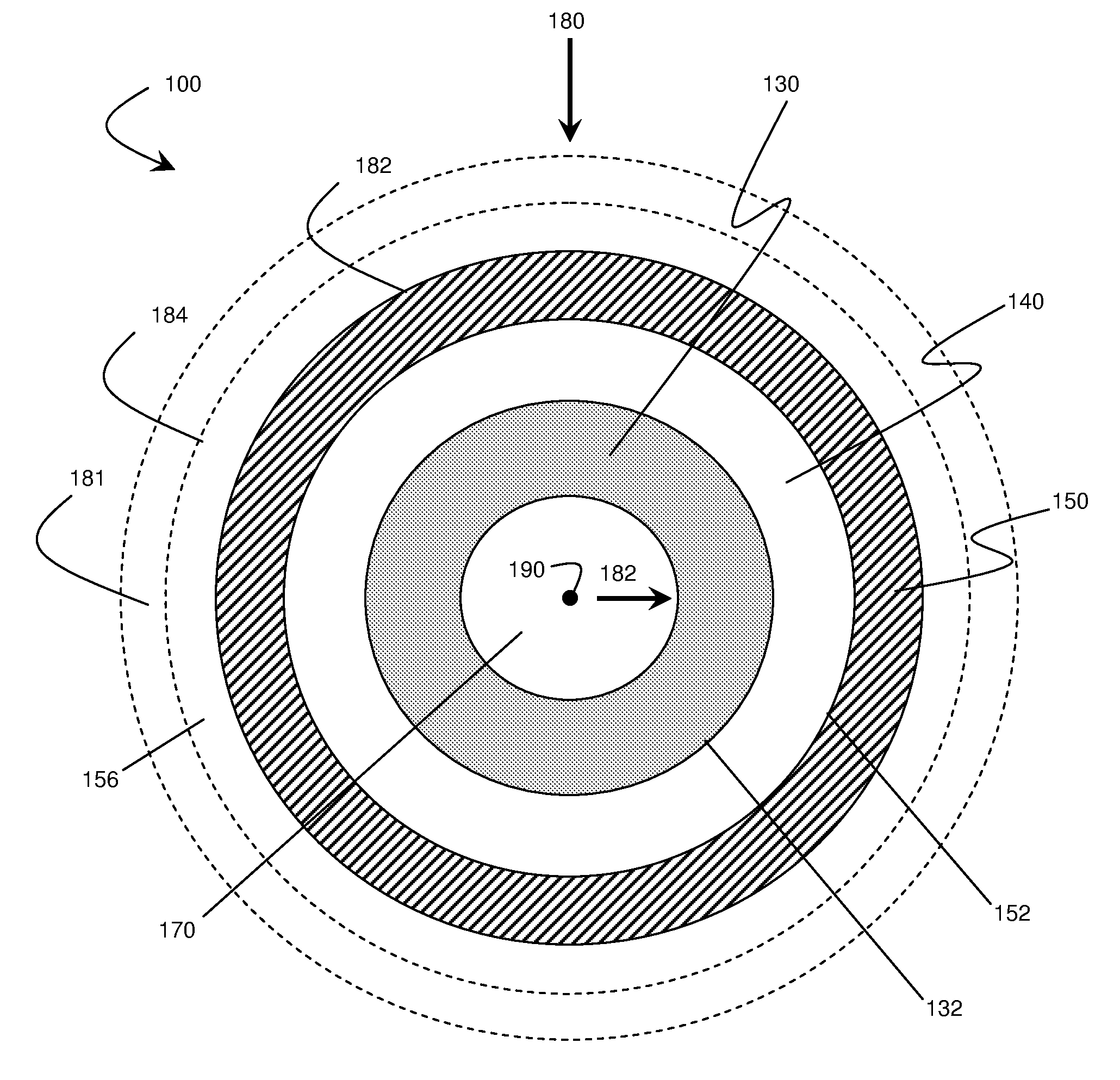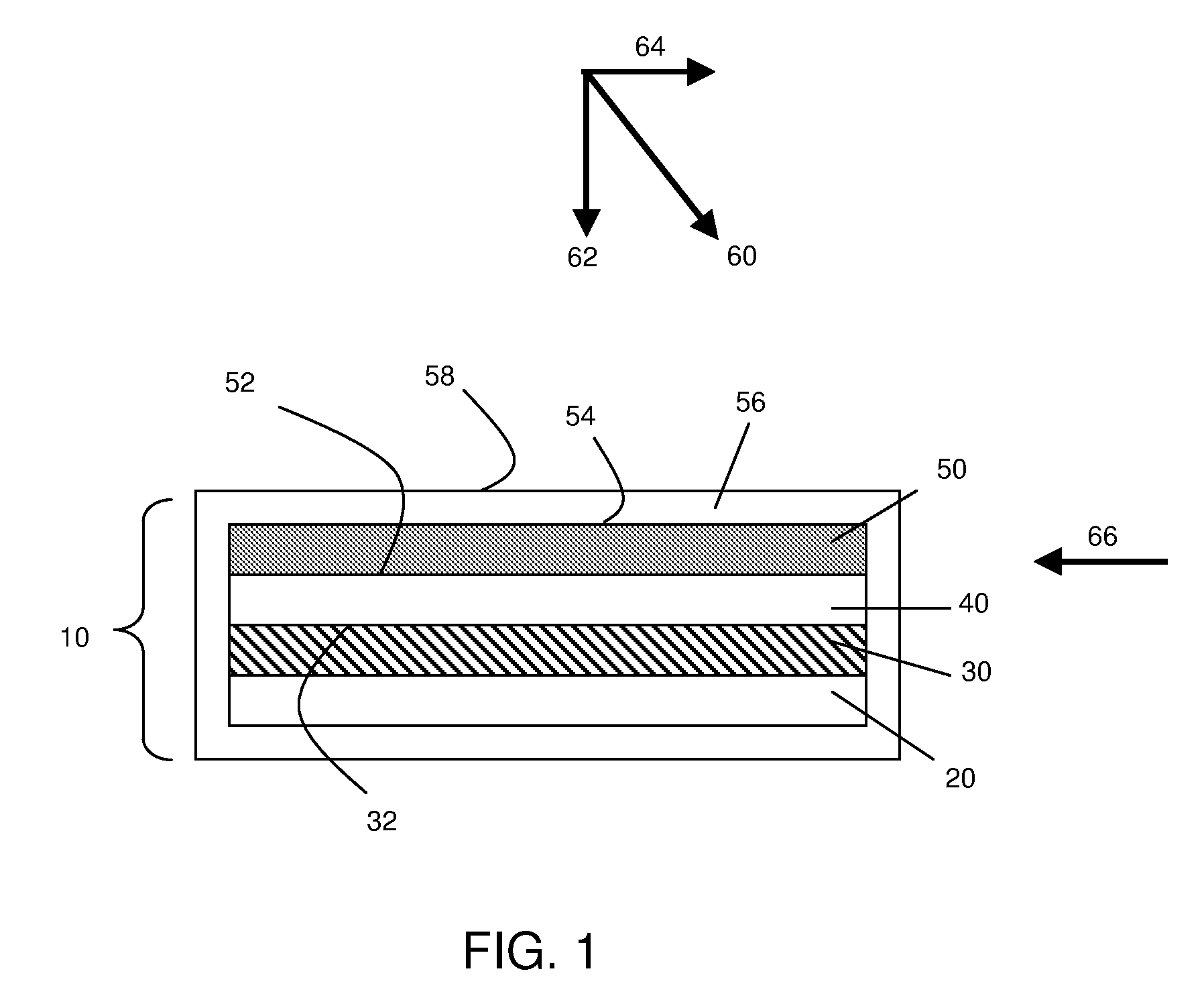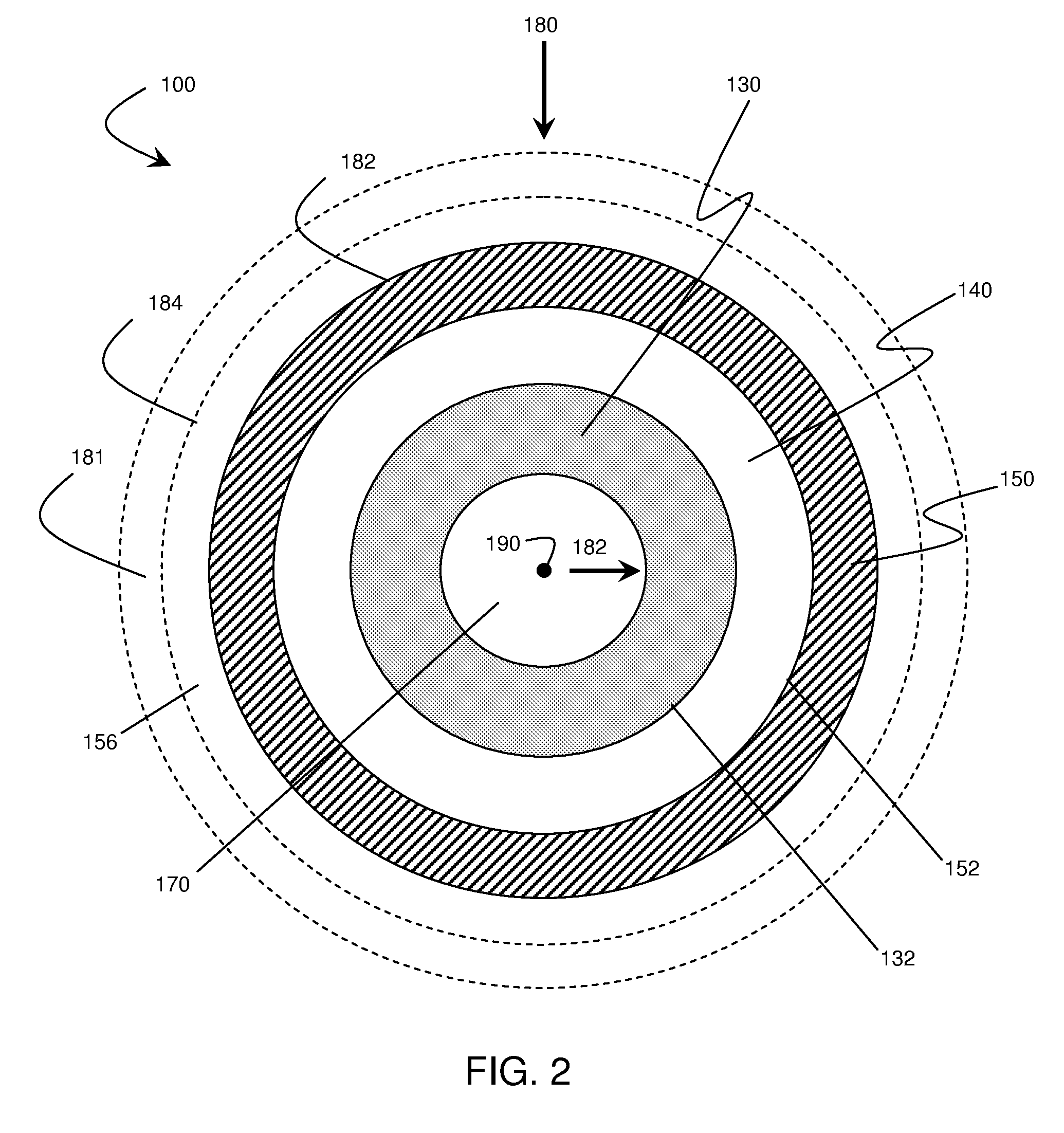Application of force in electrochemical cells
a technology of electrochemical cells and force, applied in the field of electrochemical cells, can solve the problems of uneven surface of one or more electrodes, increasing poor cell performance,
- Summary
- Abstract
- Description
- Claims
- Application Information
AI Technical Summary
Benefits of technology
Problems solved by technology
Method used
Image
Examples
example 1
[0094]In this example, an anisotropic force with a component normal to the active surface of an anode is applied to an electrochemical cell during at least one period of time during charge and / or discharge of the cell. The anode active surface and the anisotropic force were together selected such that the anisotropic force affected the surface morphology of the anode active surface to inhibit increase in anode active surface area through charge and discharge. As illustrated in Example 2, in the absence of the anisotropic force but under otherwise essentially identical conditions, the anode active surface area is increased to a greater extent through charge and discharge cycles.
[0095]In this example, lithium metal (>99.9% Li, 2 mil thick foil available from Chemetall-Foote Corp., Kings Mountain, N.C.) was used as the anode. The electrolyte comprised 13.2 parts of lithium bis(trifluoromethane sulfonyl)imide, (lithium imide available from 3M Corporation, St. Paul, Minn.), 1.1 parts lit...
example 2
[0098]In this example, an electrochemical cell identical to the cell employed in Example 1 was charged and discharged. In this example, the electrochemical cell was charged and discharged in the absence of the anisotropic force. In addition, the conditions under which the cell was operated were essentially identical to those outlined in Example 1.
[0099]Using the same analysis as in Example 1, it was found that, after cycling in the absence of the anisotropic force but under otherwise essentially identical conditions, the anode active surface area was increased to a greater extent through charge and discharge cycles. FIG. 5 includes an SEM micrograph of a lithium anode after charge and discharge in the absence of an isotropic force. The resulting anodes were very porous, had more than doubled in thickness, and were composed primarily of decomposition products rather than metallic lithium.
example 3
[0100]FIGS. 6A-D includes SEM micrographs of various deposited lithium metal anodes after 30 charge / discharge cycles. The anode in FIG. 6A was cycled in the absence of an anisotropic force, while the anodes in FIGS. 6B, C, and D were cycled with applied forces defining pressures of 49, 73.5, and 98 Newtons / cm2, respectively. From the micrographs, it can be seen that as the applied force was increased, the resulting lithium metal anode was thinner and less porous.
[0101]FIGS. 7A-D includes SEM micrographs of various stripped lithium metal anodes after 30 charge / discharge cycles. The anode in FIG. 7A was cycled in the absence of an anisotropic force, while the anodes in FIGS. 7B, C, and D were cycled with applied forces of 49, 73.5, and 98 Newtons / cm2, respectively. Again, as the applied force was increased, the resulting lithium metal anode was thinner and less porous.
PUM
| Property | Measurement | Unit |
|---|---|---|
| pressure | aaaaa | aaaaa |
| pressure | aaaaa | aaaaa |
| pressure | aaaaa | aaaaa |
Abstract
Description
Claims
Application Information
 Login to View More
Login to View More - R&D
- Intellectual Property
- Life Sciences
- Materials
- Tech Scout
- Unparalleled Data Quality
- Higher Quality Content
- 60% Fewer Hallucinations
Browse by: Latest US Patents, China's latest patents, Technical Efficacy Thesaurus, Application Domain, Technology Topic, Popular Technical Reports.
© 2025 PatSnap. All rights reserved.Legal|Privacy policy|Modern Slavery Act Transparency Statement|Sitemap|About US| Contact US: help@patsnap.com



